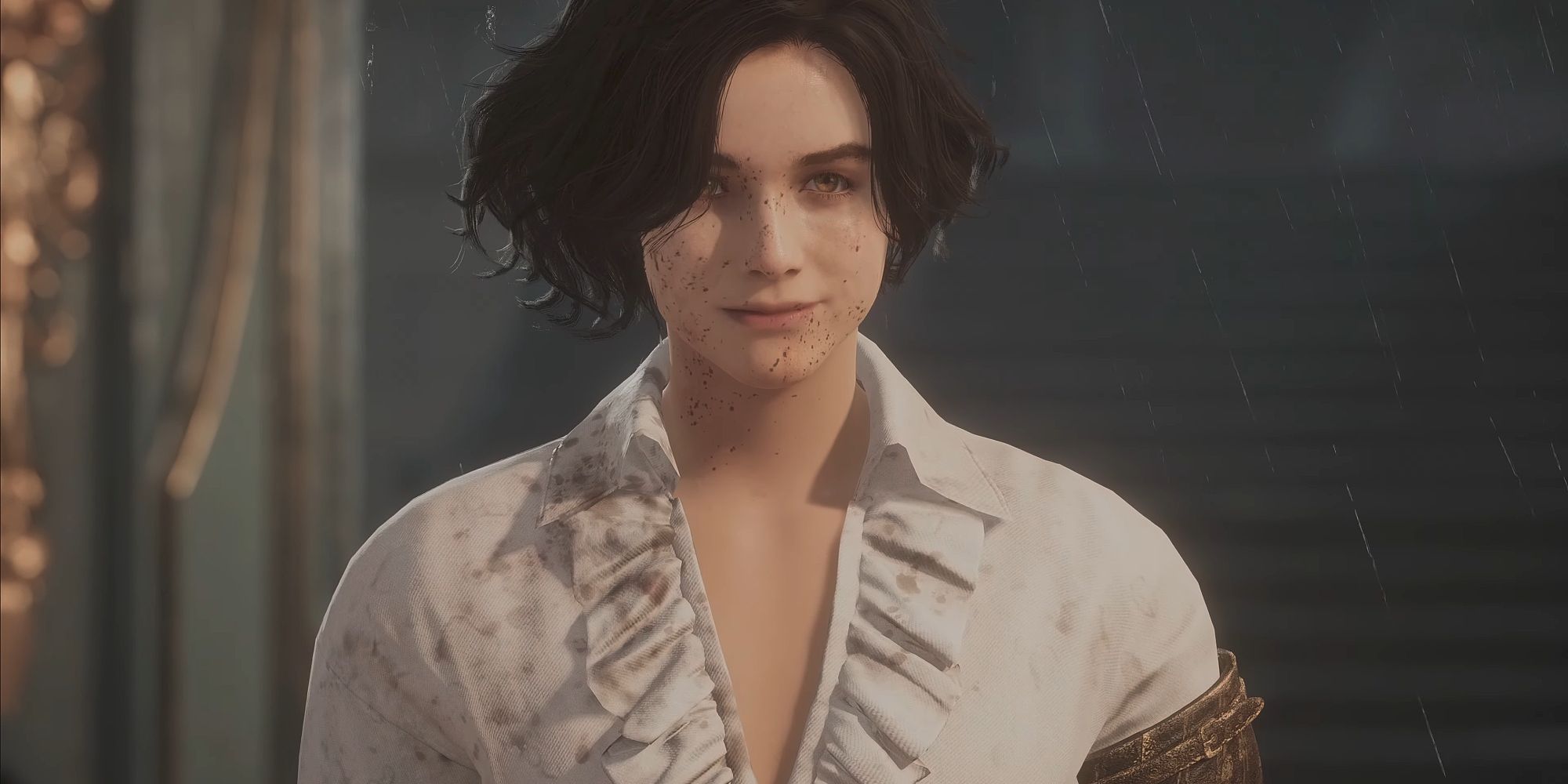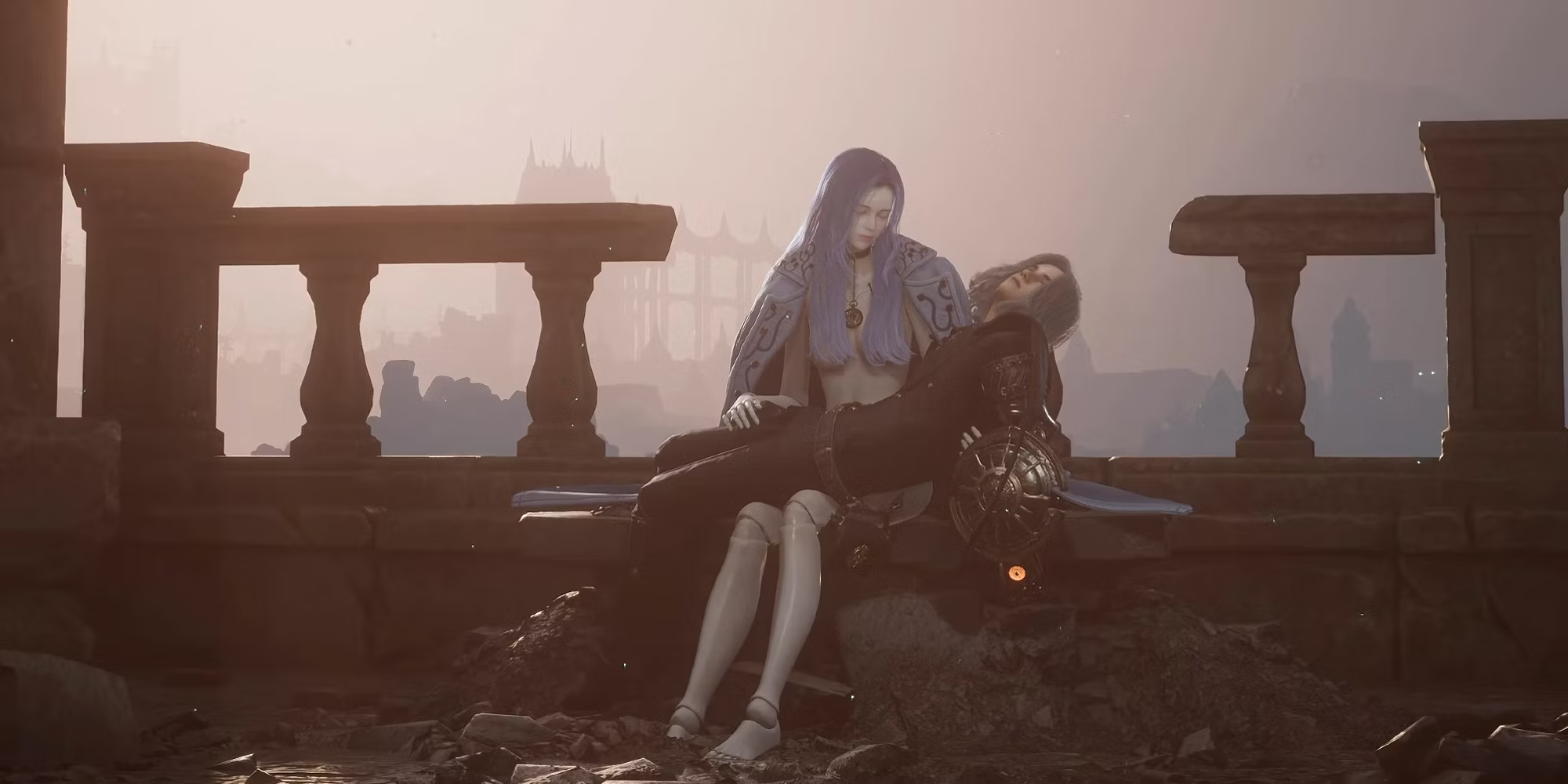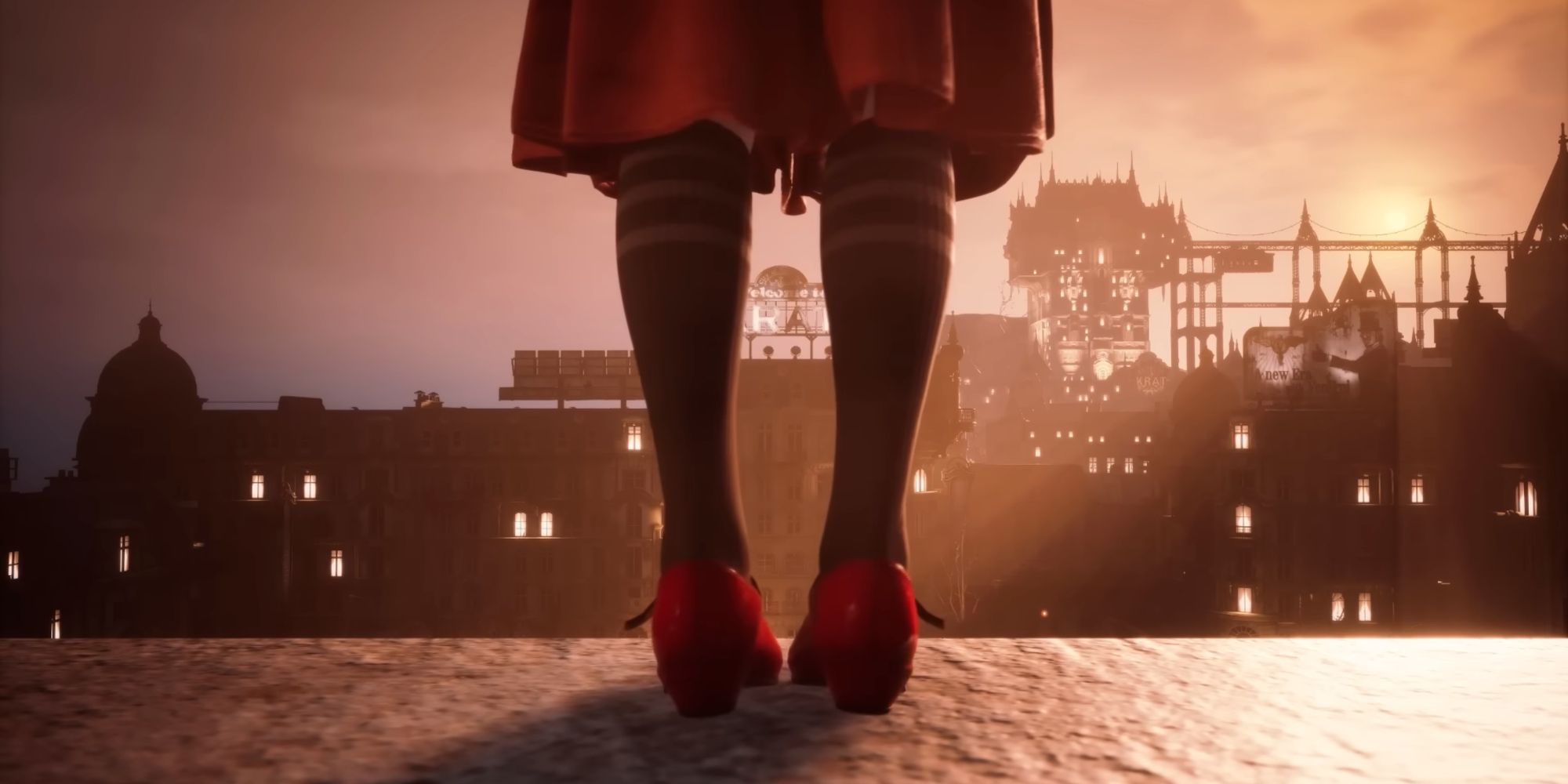So you’ve finished the story of Lies of P and gotten all the endings. You probably have a few questions about what you’ve just seen, and we’ve got answers.
Lies of P has three endings: Real boy, Free From the Puppet’s Strings, and Rise of P. Real Boy only requires that you surrender your heart to Gepetto at the end of the game. If you refuse to give your heart to Gepetto, then it’s possible for you to get the remaining two endings. But what changes with these endings? And what do they mean for the story? Also what the heck is going on in that post-credits scene?
Real Boy Ending
In this ending, P agrees to give his heart to Gepetto. Gepetto thanks him and gives P a hug, just before ripping out P’s heart. He walks over to a case where the Nameless Puppet lies and places the heart into it. A hand reaches out from the case, and Carlo has been reborn.
The next scene shows Carlo emerging from Hotel Krat with blood smeared all over him and the bodies of the hotel’s residents lying behind him. Carlo smiles at his father, and Gepetto returns the smile while thanking Carlo for returning. The screen fades to black and Sophia asks “is this truly the future you wanted?”
In a letter after this ending, Gepetto tells Carlo that he’s leaving to improve Krat for Carlo, and replaces everyone in the hotel with puppet versions of themselves. These puppets, along with Gepetto’s actions in Krat are meant to make the world a better and safer place for Carlo.
Why Did Carlo Do This?
It’s implied that Gepetto may have some control over this version of Carlo. In a flashback, Carlo admits that he was fed up being ignored by Gepetto, and didn’t care if Gepetto “kicks the bucket.” Yet, once he’s revived, Carlo has done nothing but loyally follow Gepetto’s orders, including the murder of all the people who supported P up to this point. In many ways, Carlo might physically be a real boy, but for all other intents and purposes, he’s more of a puppet than P was.
Carlo is now in a world where everything is set and created for him by Gepetto. The people and puppets he interacts with are all, to some degree, controlled by Gepetto, and in doing so, Carlo loses his own agency for it. He doesn’t have other people to consider or interact with, just puppets that will always do what he says. His personal safety is also in Gepetto’s hands since Gepetto has also gotten rid of the Petrification Disease.
Free From The Puppet’s Strings Ending
If P refuses to hand over his heart, Gepetto will control the Nameless Puppet and fight P. However, the Nameless Puppet will get the upper hand and aim a deadly blow toward P’s heart. Gepetto puts himself between the puppet and P, taking the lethal blow because he needs P’s heart intact. P takes the moment to finish off the Nameless puppet before holding Gepetto’s body.
Gepetto spends his final words cursing P for being a useless puppet. P looks on at his deceased father, and the scene fades to black.
The Meaning Behind The Ending
Despite its abrupt ending, this ending still has plenty of meaning behind it. The player can only get this ending if P’s humanity isn’t high enough, meaning he hasn’t lied enough to embrace being human. Throughout the game, P is given opportunities to either lie for the sake of others or lie to spare people their feelings. Empathy and freedom of choice are emphasized as being key parts of humanity, while pure obedience regardless of the feelings of others is a trait that only puppets would have.
In this ending, P’s disobedience with Gepetto comes far too late. While he’s no longer dancing to Gepetto’s tune, he’s also unsure what to do with his freedom.
Rise Of P Ending
To get the Rise of P ending, the player has to grant Sophia peace, taking her Ergo and turning P’s hair white. After that, this ending starts similarly to Free From The Puppet’s Strings, in that the player has to first refuse to hand over P’s heart, then defeat the Nameless Puppet. Gepetto will still throw himself in front of the Nameless Puppet’s killing blow, giving you time to finish off the puppet. However, the differences start when P cradles Gepetto’s dying body.
P sheds a tear for his fallen father figure. Gepetto, seeing this singular tear, realizes that P has become a real human and a resurrected Carlo. His expression softens and in his final breath, Gepetto whispers “I’m sorry, son.”
Unlike in the Free From The Puppet Strings ending, P grieves for his father, emphasizing his newfound humanity. He soon wanders to a balcony where an empty puppet is sitting quietly in the ruins. He takes out Sophia’s Ergo and places it in the new puppet, then falls unconscious. A newly revived Sophia greets P and holds him in a mirror image of the Madonna della Pietà statue, and the screen fades to black. When the player returns to Hotel Krat, Sophia will have a letter for P that thanks him for reviving her and tells him that she’ll stay at the tower until more is discovered about this new form of humanity created from a puppet.
What Just Happened In This Ending?
Unlike the other two endings where Carlo is resurrected as a human but is still Gepetto’s puppet (Real Boy), and one where Carlo’s body dies and P is left as a puppet without strings (Free From The Puppet’s Strings), in Rise of P, P becomes a human being despite his puppet body. The player achieves this by having P defy the Grand Covenant and showing that even though he’s not bound to it like other puppets, P’s ability to choose not to follow the Covenant is what makes him more human. Lying is the most straightforward way to demonstrate this, with each lie being told by P making him more and more human.
Granting peace to Sophia is also a perfect example of defying the 2nd law of the Covenant (do not harm humans). Sophia has been hooked into a machine that’s tortured her, mutilated her, abused her powers, and left her in excruciating pain. Granting her mercy here is a uniquely human trait because P empathizes with that pain and wishes for it to end for her, something a puppet following the Covenant wouldn’t be able to do because it would count as harming her. Taking her Ergo here and gaining long white hair also shows the final step for P to become human since puppet hair neither grows nor turns white.
After the final battle, giving Sophia’s Ergo a new body and giving her a second chance at life has a religious undertone that helps underscore both Sophia’s and P’s humanity, evidenced by the homage to the Madonna della Pietà pose. P’s “sacrifice” of Ergo and the resulting collapse represent a symbolic “death” to atone for the sins of Simon, who mistreated Sophia, and Gepetto, who started the Puppet Frenzy and got countless people killed. Now both P and Sophia are free to live out their lives as newly reborn humans, and the concept of sacrifice and righting the wrongs of the past is also a uniquely human trait.
Post-Credits Cutscene Summary
In a new scene, Giongio is on a train discussing the “Krat experiment” with someone on the phone. He mentions that his name is actually Paracelsus and that there’s a new “brother.” It’s implied that he means that there’s a new immortal being running around. Afterward, the person he’s talking to mentions how they’ll have to get the Arm of God back and that Paracelsus will be pursuing another key named Dorothy.
The scene changes to a girl walking around the rooftops of Krat with bright red slippers, hinting that this is Dorothy and the story from The Wizard of Oz will play a future role in Lies of P’s story.
What Does Dorothy And Paracelsus Have To Do With Lies Of P?
What follows in this section is theory and speculation based on context clues from Paracelsus’ conversation and the naming scheme of the characters themselves.
In history, Paracelsus was a famous alchemist and physician. Commonly in literature, Alchemists are associated with the search for immortality, and it appears Paracelsus and whoever he’s communicating with are no exception. Based on the implications of their dialogue, it could be that “brothers” are simply the name used by this organization to refer to fellow immortal human beings.
They later mention how they’ll have to “get his arm back” which is most likely a reference to the God’s Arm artifact used by Manus and currently in P’s possession. The description notes that the Alchemists believed it belonged to “a god who was ripped to shreds trying to give immortal life to the humans he so loved, and they wanted to revive him.” Paracelsus then mentions acquiring another “key” for their organization named Dorothy and her red slippers.
Since the Alchemists’ goal is to stitch together their god into one being again, it draws some similarities with the alchemical concept of the Rebis, or the divine Hermaphrodite. The Rebis is the result of the “great work” (or magnum opus) and is created by combining opposing qualities like male and female, putrification and purification, and spirit and matter, into a single being. In Lies of P, these themes are explored through Sophia and P’s journey, conquering the Petrification Disease, and puppets awakening their egos to become new humans respectively.
Additionally, in classic Alchemical terms, the male and female in this equation are known as the “Red King and the White Queen.” What’s interesting is how P has a major plot point about giving him grayish-white hair, and he starts the game with a simple white shirt. In comparison, Dorothy is known for her red shoes. These clues suggest that when Paracelsus refers to Dorothy as a “key,” he could be referencing her as a key to help the Alchemists revive their god.
With that, fans of Lies of P will have to wait until the DLC or a sequel game to find out what exactly Paracelsus meant in this final conversation and how exactly Dorothy will play a part in it. While this final conversation and the naming conventions used can provide a few clues and predictions for what will happen in the future, Neowiz games and Round 8 Studios have created a solid foundation for future installments in this universe.



